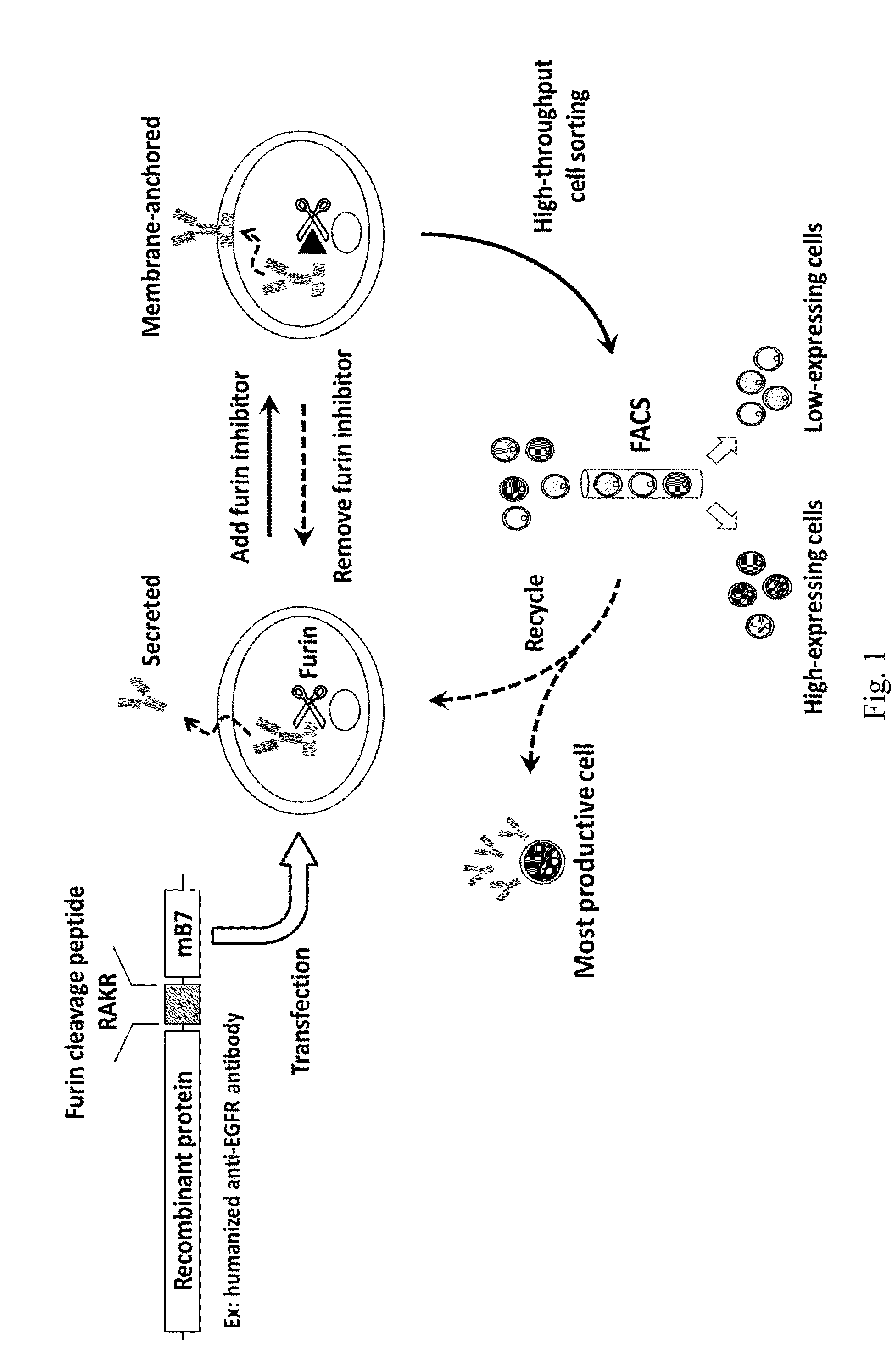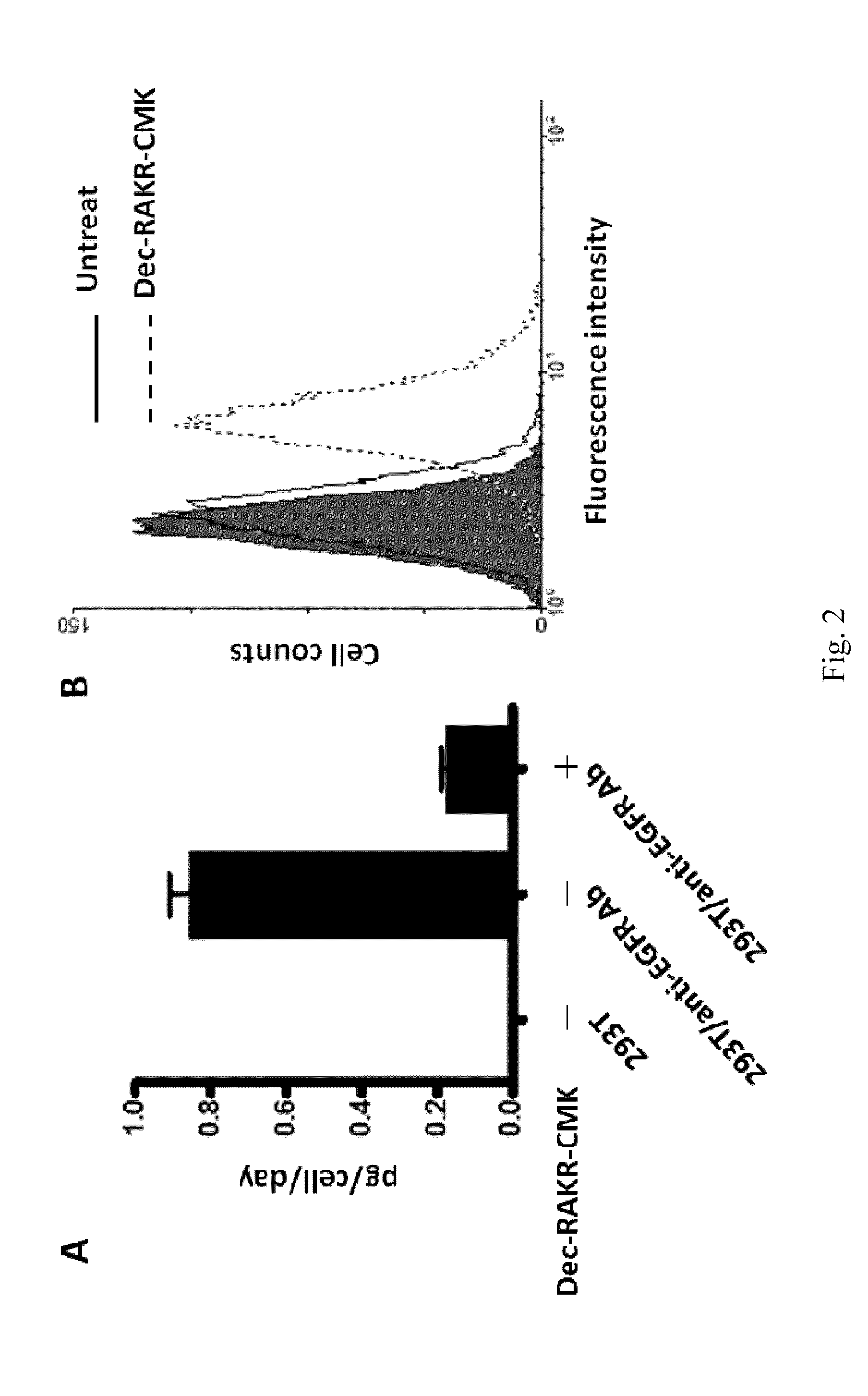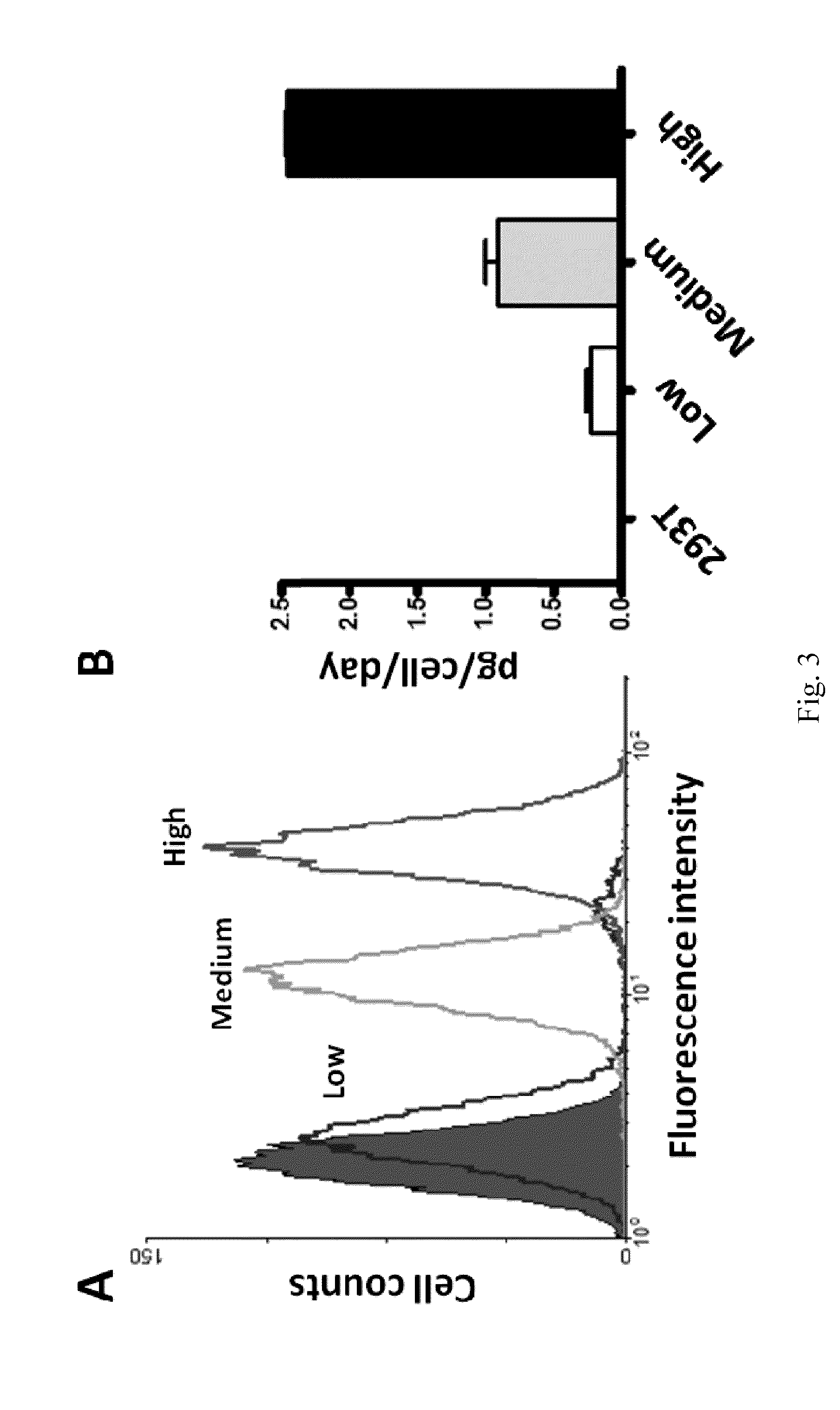Method of high-throughput sorting of high expression cell and cells sorted therefrom
a high-throughput, cell technology, applied in the direction of fluorescence/phosphorescence, fused cells, instruments, etc., can solve the problems of large amount of labor and time-consuming, and inability to efficiently sort high-expression cells
- Summary
- Abstract
- Description
- Claims
- Application Information
AI Technical Summary
Benefits of technology
Problems solved by technology
Method used
Image
Examples
example
Example 1
Selection of High-Producing Recombinant Protein Cell Lines
[0049]To construct anti-EGFR Ab-RAKR-mB7 as shown in FIG. 1, a furin cleavage peptide (RAKR) was used to join an anti-EGFR antibody (a secretory humanized antibody) and the extracellular-transmembrane domains of the mouse B7 gene sequence (mB7) using cloning technology. The gene was transfected into mammalian cells (human embryonic kidney cells, HEK-293). Under normal conditions, rich furin protease in Golgi can effectively cleave a furin cleavage site (PAKR) between anti-EGFR antibody and mB7 to allow secretion of the anti-EGFR antibody into an extracellular matrix. When furin inhibitor (DEC-RVKR-CMK) was added, to inhibit the activity of the furin protease, the anti-EGFR Ab-RAKR-mB7 would not be cleaved by furin protease and would be stably anchored on the cell membrane surface. Then, FITC-conjugated anti-human antibody was used to label the anti-EGFR Ab-RAKR-mB7 on the cell membranes. By using FACS, the cells with...
example 2
Selection of High-Producing Recombinant Protein Cell Lines in Lysosomes
[0056]Example 2 exemplifies a perforin-granzyme fusion protein (PCD-GB) which is expressed in lysosome. To construct PCD-GB-RAKR-mB7 as shown in FIG. 5, a furin cleavage peptide (RAKR) was used to join PCD-GB and mB7 using cloning technology. The gene was transfected into mammalian cells (Chinese Hamster Ovary cells, LEC1). Under normal conditions, rich furin protease in Golgi can effectively cleave furin cleavage site (PAKR) between PCD-GB and mB7 so that PCD-GB would be stored in lysosome. When furin inhibitor (DEC-RVKR-CMK) was added to inhibit the activity of the furin protease, PCD-GB-PAKR-mB7 would not be cleaved by the furin protease and would be stably anchored on the surface of lysosome. If excess proteins were stored in lysosomes, part of PCD-GB-RAKR-mB7 would be anchored on the cell membrane due to secretion or exocytosis. Then, an FITC-conjugated antibody was used to label the PCD-GB-RAKR-mB7 on the c...
PUM
| Property | Measurement | Unit |
|---|---|---|
| temperature | aaaaa | aaaaa |
| self-processing | aaaaa | aaaaa |
| fluorescent | aaaaa | aaaaa |
Abstract
Description
Claims
Application Information
 Login to View More
Login to View More - R&D
- Intellectual Property
- Life Sciences
- Materials
- Tech Scout
- Unparalleled Data Quality
- Higher Quality Content
- 60% Fewer Hallucinations
Browse by: Latest US Patents, China's latest patents, Technical Efficacy Thesaurus, Application Domain, Technology Topic, Popular Technical Reports.
© 2025 PatSnap. All rights reserved.Legal|Privacy policy|Modern Slavery Act Transparency Statement|Sitemap|About US| Contact US: help@patsnap.com



